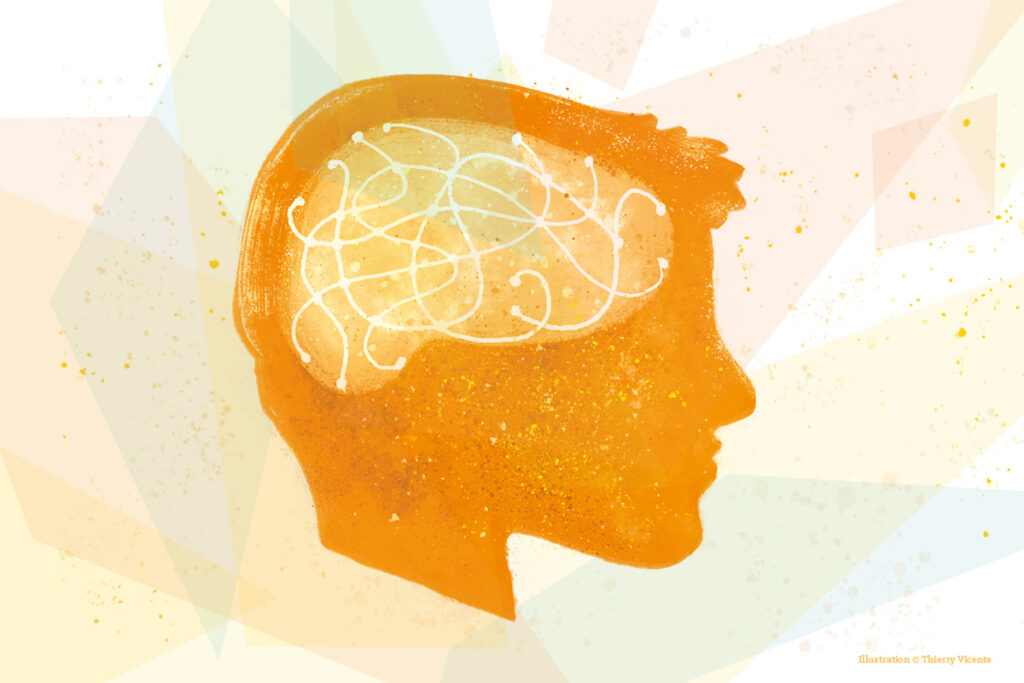[LUM#3] The brain rethought
What if the brain wasn't what we thought it was? A veritable cartographer of the brain, Montpellier neurosurgeon Hugues Duffau has discovered the incredible plasticity of our grey matter. And changed the lives of thousands of patients.

The year is 1861. French physician Paul Broca encounters a rather unusual patient: although he understands everything he is told, he has become incapable of pronouncing an intelligible word. A single syllable populates his conversations, "tan", which earns him his name. Tan is aphasic, and he is about to make a lasting impact on the history of neuroscience.
When Tan died, Paul Broca took a close look at his brain and noticed that a small area had been damaged. He deduced that this particular region controlled speech. "Hedrew the wrong conclusions from accurate observations," explains Hugues Duffau. The neurosurgeon from Montpellier is categorical: Broca's famous area does not exist. As proof of this, he cites the many patients in whom he has totally removed this area of the brain, and who nevertheless speak without any difficulty.
Broca's error
Beyond Broca's area, a whole traditional conception of the brain has been called into question. "For 150 years medicine considered that the brain was organized into different zones controlling as many specific functions. It has now been proven that this ʺlocalizationnistʺ theory is false, and yet it continues to be taught", laments the neurosurgeon, who has been leading a veritable crusade for 15 years now to twist the neck of this entrenched dogma.
So how does our brain really work? "It's organized into dynamic interactive networks capable of constantly readapting. Networks that differ from one person to another", answers Hugues Duffau. This "connectionist" approach explains why some patients can lead perfectly normal lives despite an orange-sized tumor affecting areas previously considered crucial for brain function.
"Clearly, the brain can compensate for these lesions: its incredible plasticity enables it to reorganize itself to continue functioning normally. Take the Paris metro network: if you close a station, you'll always find another way home", says the doctor. On condition, however, that the most important connections are not affected. "If you close Chatelet and Montparnasse, you risk paralyzing traffic", warns the winner of the Herbert-Olivecrona Medal, the equivalent of the Nobel Prize for neurosurgery.
Awake operations
This connectionist approach has revolutionized the treatment of patients with brain tumors. "As long as the tumor hasn't caused any disability, we can remove most of it and treat the patient without systematically resorting to chemotherapy," explains Hugues Duffau. But if every brain is different, how can we know where the Chatelet station is located in the patient's brain? The only solution is to keep the patient awake throughout the operation. It's an unusual procedure, to say the least, but one that "enables us to check the impact of surgical procedures in real time", says Hugues Duffau.
In the operating room, "virtual transient lesions" are created in the brain by means of small electrical impulses applied to very specific areas. Meanwhile, a neuropsychologist and a speech therapist ask the patient to respond to instructions to test his or her ability to speak, move or recognize an emotion. If he gives the wrong answer, then the doctor knows where not to intervene, or risk disconnecting an important network. "For example, if the patient says ʺun voitureʺ instead of ʺune voitureʺ, I mark the area with a little label to remind me not to remove anything in that crucial spot"...And does it hurt? Not even: "the brain has no pain receptors", reassures the neurosurgeon.
Preserving quality of life
In 20 years, Hugues Duffau has operated on over 650 patients, doubling or tripling their life expectancy. From all over the world, he receives dozens of men and women suffering from brain tumors who have been deemed inoperable by their colleagues, for fear of serious after-effects. "By operating on awake patients, we can remove as many tumors as possible, while considerably reducing the risk of after-effects from 20% to less than 0.5%. It's vital that we preserve patients' quality of life. The first patients operated on in this way by Hugues Duffau were 20 years ago. They are still here to testify to this.
For early detection
2 500 à 3 000. That's the number of new patients diagnosed with glioma every year in France. Often too late!" laments Hugues Duffau. By proposing routine MRI screening, we could detect these tumors very early and propose to remove at least a large part of them", suggests the man who revolutionized neuroscience. An idea that is beginning to gain ground in the medical community.
UM podcasts are now available on your favorite platforms (Spotify, Deezer, Apple podcasts, Amazon Music...).